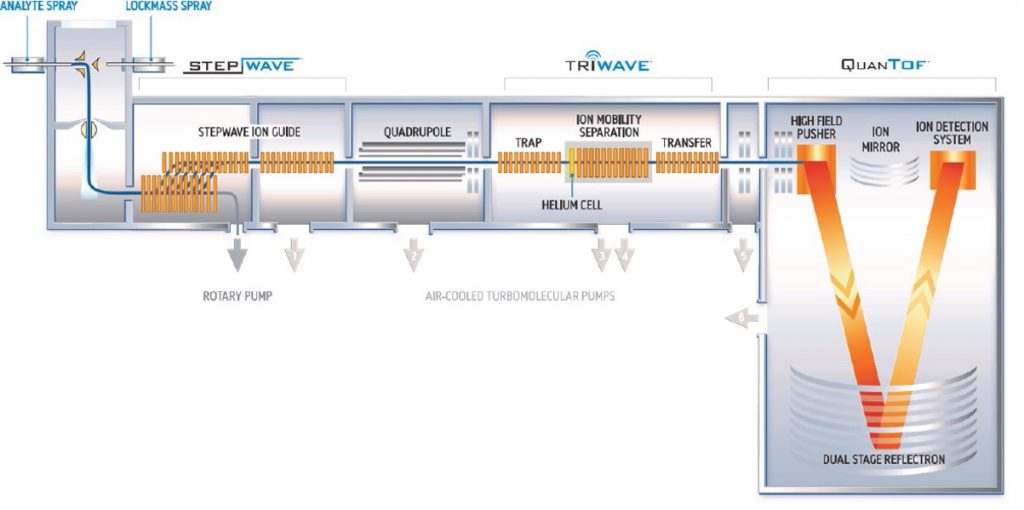LC-MS/MS systems
In 2014, ProGenTomics made the strategic decision of pursuing the innovative “Data-independent Acquisition” (DIA) methodologies. Two LC-MS platforms were specifically developed for doing that: The TripleTOF 5600 (Sciex) and the Synapt G2-Si (Waters) Q-TOF instruments. In the meantime, two additional high-resolution Q-TOF instruments from Sciex were obtained; the TripleTOF 6600 and the ZenoTOF 7600.
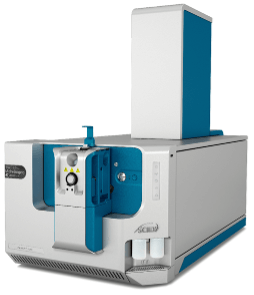
ZenoTOF 7600 (Sciex)
Our latest instrument, the ZenoTOF 7600, is packed with innovations and revolutionary technology, which enable an unprecedented versatility. The instrument is coupled directly to an Acquity M-class UPLC system (Waters Inc.) through the Optiflow Turbo V ion source, which allows for both nano- and capillary flow (0.1-10µL/min).
The incorporated zeno trap pulsing allows to trap incoming peptide ions and to release them as packages into the TOF mass analyzer. This overcomes the Q-TOF MS/MS duty cycle deficiencies, which increases sensitivity up to a 20-fold compared to a standard acquisition. When combined with SWATH data independent acquisition, this technology allows to dive deeper into any given proteome than before. The Electron Activated Dissociation allows for a tunable fragmentation of all molecule types, including large peptides, intact proteins, and heavily modified peptides. this renders an unprecedented view on biopharmaceuticals and the epigenetic landscape.
TripleTOF 6600 (Sciex)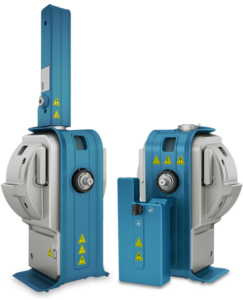
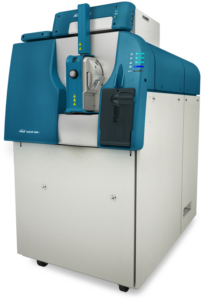
The TripleTOF 6600 is the big brother of the 5600 that comes with enhanced sensitivity and resolution. It is also coupled to a capillary flow liquid chromatography system (Eksigent LC425). The redesigned TOF entrance optics of the 6600 avoid downtime and allow for scheduled ionization which decreases downtime of the instrument, while analytical columns can be mounted directly on the new optiflow Turbo V source, reducing the risk of peakbroadening. These improvements significantly increase quantitative robustness and allow for larger experiments and sample batches to be reproducibly quantified. The instrument is capable of both Data-Dependent acquisition and sequential window acquisition of all theorethical mass spectra (SWATH).
TripleTOF 5600 (Sciex)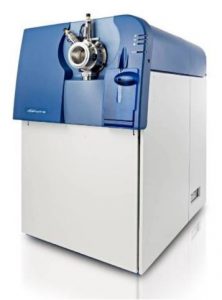
The Triple TOF 5600 is coupled to a capillary flow (1-10µL/min) liquid chromatography (Cap-LC) system (Eksigent LC425). Cap-LC became increasingly widespread over the past decade in favor of nano-LC due to its robustness and stability, which provides the quantitative accuracy and therefore statistical power needed for solid biological results. This is of particular importance when running SWATH runs (Data Independent Acquisition). Herein, a library of peptide identifications is first generated on all the samples in the experiment using conventional DDA (Data Dependent Acquisition). Next, these same samples are acquired by sequential fragmentation of small m/z windows to generate quantitative 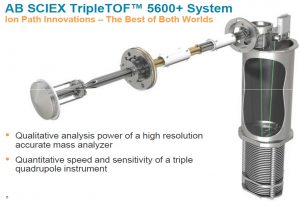 information on the transitions found in the library. It is, in essence, a post-acquisition MRM-like data-extraction approach providing the user with a permanent record of everything. This implies that future hypotheses can be pursued in a targeted analysis long after the samples were acquired using SWATH.
information on the transitions found in the library. It is, in essence, a post-acquisition MRM-like data-extraction approach providing the user with a permanent record of everything. This implies that future hypotheses can be pursued in a targeted analysis long after the samples were acquired using SWATH.
No need to say that the intrinsic sensitivity and speed of this instrument equally allow for high quality DDA, while the high resolution can be applied for intact protein analysis.
SynaptG2-Si (Waters)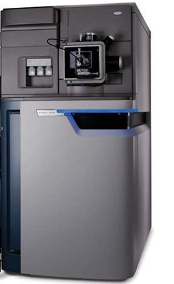
The Synapt G2-Si is a versatile Q-TOF device comprising Ion Mobility separation (IMS) and Electron Transfer Dissociation (ETD) capabilities. It allows for a plethora of different acquisition strategies, the most prominent of which are HDMSE or ion mobility-assisted data-independent acquisition and HDDDA or ion mobility-assisted data-dependent acquisition. Herein, both identification and quantitation is done on DIA data. The Synapt G2-Si is coupled to a Nano Acquity LC-system, capable of both capillary- and nano-flow LC.
